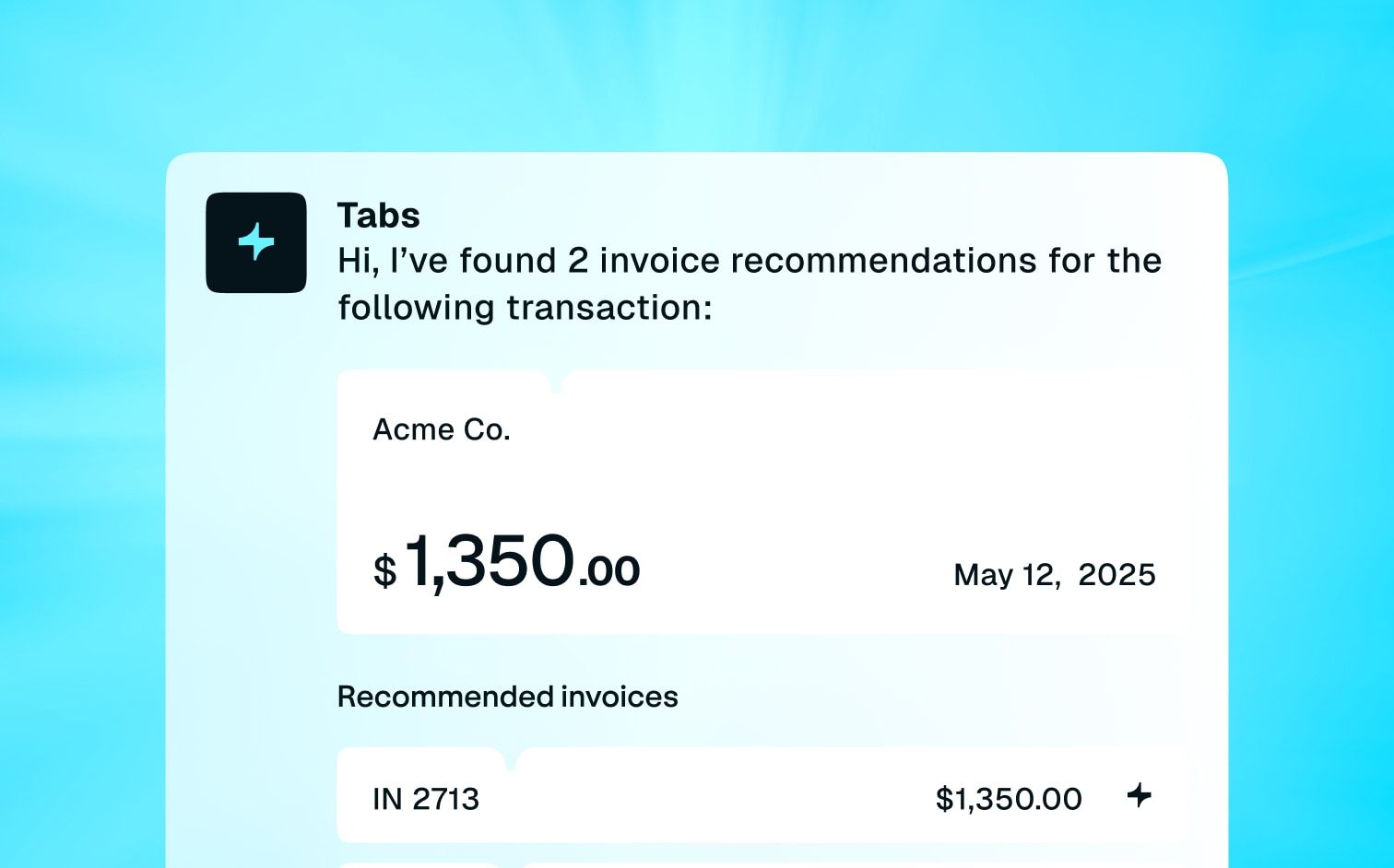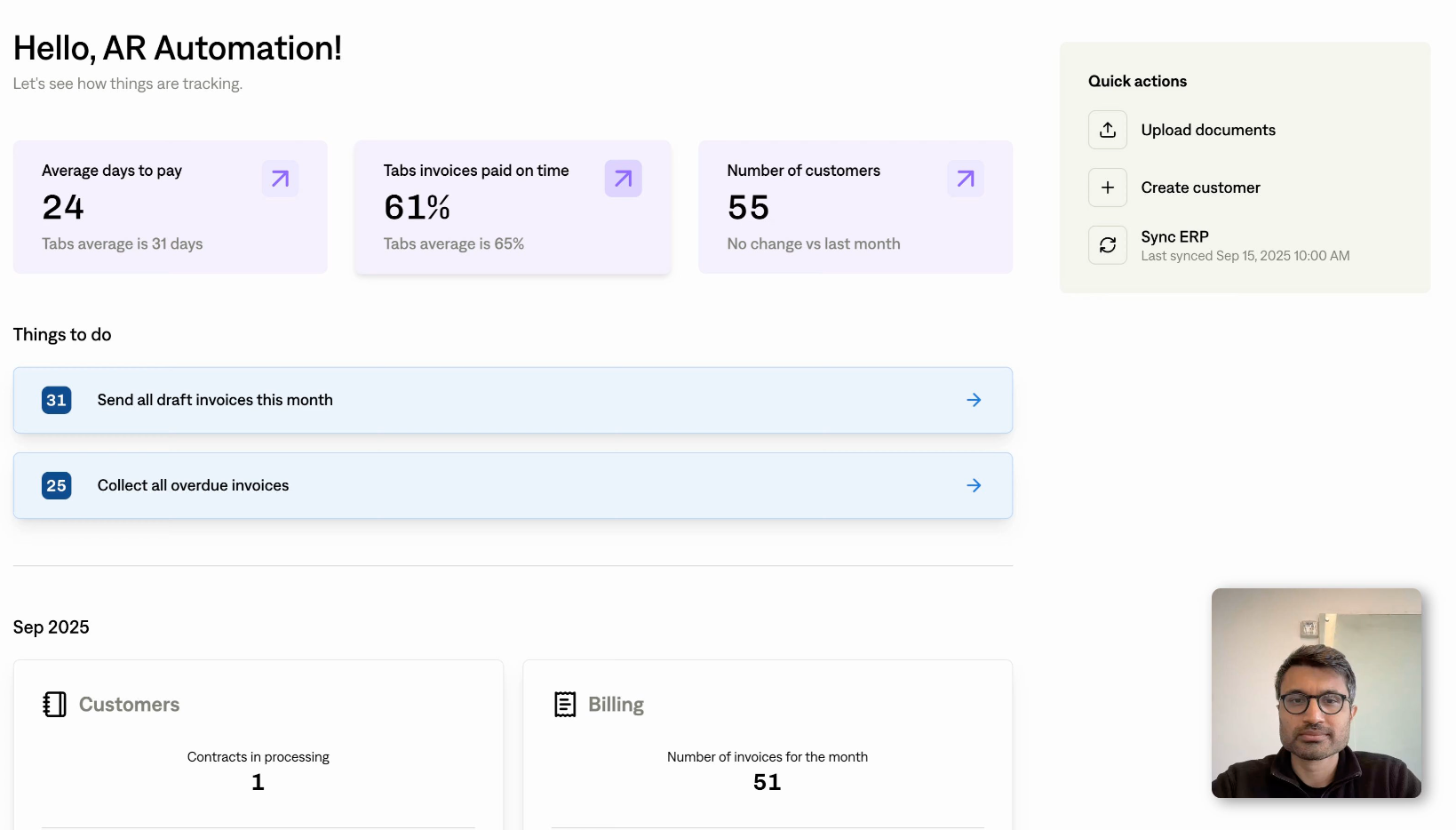Ever get that lump-in-your-throat feeling when you think about accounting? It's not just you. Deferred revenue is one of those concepts that can seem a little intimidating at first, but honestly, it's all about accurately reflecting your business's financial health. Think of it as an honest accounting practice, not a burden.
This post breaks down everything you need to know about deferred revenue, from why it's considered a liability to how it impacts your balance sheet and income statement. We'll even walk you through a deferred revenue journal entry example, so you can feel confident about keeping your books in order.
Let's demystify deferred revenue to take control of your financial reporting.
Key Takeaways
- Deferred revenue represents an obligation. Money received upfront for goods or services you haven't yet delivered is a liability, not income. Track it accordingly on your balance sheet.
- Accurate accounting is essential. Properly managing deferred revenue ensures accurate financial reporting and helps you make informed business decisions. Leverage tools and review your records regularly.
- Recognize revenue when earned. Don't count your chickens before they hatch. Recognize deferred revenue as income only when you've delivered the goods or provided the service.
What is Deferred Revenue?
Deferred revenue is money your business receives before delivering goods or services—like an advance payment. Because you haven't yet earned this income, it's a liability on your balance sheet, often called unearned revenue. Deferred revenue is recognized when you provide the product or service.
For example, if a customer pre-pays for a year-long software subscription, you'd initially record that as deferred revenue. Each month, as you provide software access, you recognize a portion of that revenue. This ensures your financials accurately reflect earnings and liabilities.
Accurate deferred revenue recording is crucial. It's a key concept in accrual accounting, which matches revenue with the period it's earned, not just when cash is received. This aligns with the revenue recognition principle, providing a clear view of your financial performance.
The difference between deferred and recognized revenue is the timing of delivery. Deferred revenue is a liability until the obligation is met, then it transitions to recognized revenue on the income statement. This distinction is important for understanding financial health and compliance. Properly managing deferred revenue is essential for accurate reporting and smart decisions.
What is Deferred Revenue and Why is it Important?
Understanding deferred revenue is crucial for any business that receives upfront payments for services or goods delivered later. It plays a significant role in accurately representing your company's financial health. Let's break down what it is and why it matters.
Definition and Significance
Deferred revenue is money received for work you haven't yet performed or products you haven't yet delivered. Think of it as a prepayment. While it's cash in hand, you haven't actually earned it yet. That's why it's considered a liability on your balance sheet—it represents an obligation to your customer.
You've made a promise to provide a service or product, and until you do, that money isn't truly yours. This distinction is key for accurate financial reporting and provides a clearer picture of your company's current financial standing. It represents an existing obligation to the customer.
Deferred vs. Recognized Revenue
The difference between deferred and recognized revenue comes down to timing. Deferred revenue sits on your balance sheet as a liability until you fulfill your obligation to the customer. Once you provide the promised service or product, that revenue becomes recognized revenue. At that point, it moves from the liability section of your balance sheet to the revenue section of your income statement.
This shift reflects that you've now earned the income. This distinction is important for accurate financial reporting and informed decision-making.
Accounting Principles of Deferred Revenue
This section explains the core accounting principles behind deferred revenue, including accrual accounting and revenue recognition. Understanding these concepts is crucial for accurate financial reporting, especially for subscription businesses.
Accrual Accounting Basics
Deferred revenue is closely tied to accrual accounting. Unlike cash basis accounting, which recognizes revenue when cash is received, accrual accounting recognizes revenue when it's earned and expenses when they're incurred. This timing difference is key, especially when a customer prepays.
For example, if a customer prepays for a year-long software subscription, you wouldn't record the entire payment as revenue on day one. Instead, you'd recognize it monthly as you provide the service. This approach gives a more realistic view of your financial performance.
Accrual accounting helps match income and expenses to the correct period, leading to a more accurate picture of profitability. It also dictates that deferred revenue sits as a liability on the balance sheet until the service or product is delivered.
The Revenue Recognition Principle
The revenue recognition principle clarifies when revenue can be recorded. It states that revenue should be recognized when a performance obligation is satisfied—when goods or services are delivered, not just when cash is received. With deferred revenue, this translates to recognizing revenue incrementally as you deliver the promised goods or services.
Using the year-long software subscription example, you'd recognize one-twelfth of the total prepayment as revenue each month. This aligns revenue with the value you provide over time. Deferred revenue accounting starts with a debit to cash and a credit to unearned revenue. As services are delivered, unearned revenue is debited, and revenue is credited.
This principle is crucial for accurate financial reporting and prevents businesses from inflating their revenue figures. Understanding this principle is fundamental for businesses that rely on subscriptions or other prepayment models.
Why is Deferred Revenue a Liability?
Deferred revenue is a liability because it represents a promise you’ve made to a customer. They’ve paid upfront, but you haven't yet fully delivered the goods or services. Think of it as an IOU. You owe your customers something—a product or service.
Until you fulfill that obligation, that prepayment sits on your balance sheet as a liability. This is a key difference between deferred and recognized revenue.
Balance Sheet Implications
Deferred revenue directly impacts your balance sheet. It's recorded as a liability, specifically under current liabilities if you'll recognize the revenue within one year, or under non-current liabilities if it extends beyond a year. This affects your company's overall financial position, showing an outstanding obligation to your customers.
As you deliver your product or service, the deferred revenue balance decreases, and your revenue increases. This constant shift reflects the ongoing fulfillment of your commitments. Keeping track of this is essential for understanding your company’s financial health.
Deferred revenue affects not only your balance sheet but also your income statement and cash flow statement. Accurate financial reporting is crucial for maintaining the integrity of your financial statements.
Financial Reporting Considerations
Accrual accounting requires recognizing revenue when it's earned, not when you receive cash. This is where deferred revenue becomes crucial. Recording it as a liability until you deliver the goods or services ensures your financial reporting is accurate and reflects the true economic activity of your business.
Imagine a company selling annual software subscriptions. If they received the entire year's payment upfront but recorded it all as immediate revenue, their financial statements wouldn't accurately represent their performance over time. Instead, they recognize that revenue monthly as they provide the service.
This is why having a consistently accurate deferred revenue journal entry is so important. This ensures compliance with generally accepted accounting principles (GAAP) and provides a clear picture of your financial standing to investors and stakeholders.
Recording a Deferred Revenue Journal Entry
This section explains how to record deferred revenue, walking you through the initial entry and subsequent revenue recognition.
Initial Recording
Initially, this payment increases your cash balance but doesn't represent earned revenue. Therefore, the initial deferred revenue journal entry involves a debit to your cash account and a credit to a liability account called "unearned revenue." This accurately reflects the fact that you owe the customer goods or services.
For example, if a customer prepays $1,200 for a year-long software subscription, you would debit $1,200 to cash and credit $1,200 to unearned revenue. This shows an increase in cash and an increase in your obligation to the customer. You can learn more about managing these financial transactions with automated recurring billing software.
Recognizing Revenue
As you deliver the promised goods or services, you gradually recognize the deferred revenue as earned. This involves reducing the unearned revenue liability and increasing your revenue. You accomplish this with a journal entry that debits unearned revenue and credits revenue.
Returning to our software subscription example, each month you would recognize $100 of revenue ($1,200 / 12 months). Your monthly journal entry would be a debit of $100 to unearned revenue and a credit of $100 to revenue. This process continues until the entire prepaid amount is earned and the unearned revenue balance is zero.
This aligns with the revenue recognition principle, which dictates that revenue is recognized when earned, not necessarily when cash is received. Automated billing software can help streamline this process.
Step-by-Step Guide & Examples
Here's a breakdown of a deferred revenue journal entry recording:
- Customer Prepays: A customer pays $500 in advance for six months of consulting services.
- Initial Entry:Debit Cash $500Credit Unearned Revenue $500
- Monthly Recognition (Example: Month 1): You deliver the first month of consulting services. Calculate the monthly revenue: $500 / 6 months = $83.33 (approximately).
- Monthly Entry:Debit Unearned Revenue $83.33Credit Revenue $83.33
- Repeat Step 4 for each subsequent month until all six months of service are delivered and the $500 in unearned revenue has been fully recognized as revenue. Using comprehensive financial reporting tools can simplify tracking and managing deferred revenue. Understanding these steps ensures your financial statements accurately reflect your earnings and liabilities.
When to Recognize Deferred Revenue
Knowing when to recognize deferred revenue is just as important as knowing how to record it. This ensures your financial statements accurately reflect your company's performance and financial position. Let's break down the specifics.
Criteria for Recognition
The core principle is this: you recognize deferred revenue as earned revenue when you've fulfilled the associated obligation. Simply put, you've delivered the product or provided the service you were paid for. Think of it as a promise kept.
You promised a product or service, and when that promise is fulfilled, you can recognize the revenue. This aligns with the revenue recognition principle, a cornerstone of accrual accounting. Until then, that prepayment remains a liability on your balance sheet as deferred revenue.
Timing
The timing depends entirely on when the product or service is delivered. For a one-time product sale, recognition happens at the point of delivery. For ongoing services like a yearly software subscription, revenue is typically recognized monthly as the service is provided. This ensures a consistent and accurate reflection of your earnings.
Sometimes, pinpointing the exact timing can be tricky, especially with complex arrangements. Clear contract terms outlining deliverables and timelines are essential for proper revenue recognition. This clarity benefits both your accounting team and your customer relationships.
Deferred Revenue's Impact on Financial Statements
Understanding how deferred revenue affects your financial statements is crucial for sound financial management. Let's break down its impact on your income statement, balance sheet, and cash flow statement.
Effects on Income Statement & Balance Sheet
Deferred revenue is initially recorded as a liability on your balance sheet. Think of it as a customer credit—they've paid, but you haven't yet delivered the goods or services. As you fulfill your obligations, you gradually reduce the liability and recognize the revenue on your income statement.
This ensures your financials accurately reflect earnings in the period they are actually earned, not just when the cash comes in. This aligns with generally accepted accounting principles (GAAP), specifically the revenue recognition principle. Matching revenue with the delivery of goods or services provides a clearer picture of your company's financial performance.
Again, revenue is recognized proportionally as goods or services are delivered. For example, if a customer prepays for a year's subscription, you would recognize the revenue monthly as you provide the service.
Cash Flow Implications
While deferred revenue is a liability on the balance sheet, it's important to understand its impact on your cash flow. The initial payment increases your cash balance, appearing as an inflow on your cash flow statement. This is a key distinction: even though the revenue isn't yet recognized on the income statement, the cash is available to your business.
Available cash can be used for operational expenses, investments, or other business needs, even though it hasn't technically been "earned" according to accounting principles. This is why understanding deferred revenue is so important for financial planning and decision-making—it allows you to see the full picture of your available resources.
Common Deferred Revenue Scenarios
Understanding how deferred revenue works in practice is key to managing your finances effectively. Let's explore some common scenarios:
Subscription Services
Subscription services are a prime example of deferred revenue. Think streaming platforms like Netflix or software subscriptions like Adobe Creative Cloud. Customers pay upfront for access over a specific period (monthly, annually, etc.). You receive the cash, but you haven't earned it yet.
The revenue is recognized gradually as the service is provided, typically monthly. So, if a customer pays $120 for a year-long subscription, you'd recognize $10 of revenue each month. Automated revenue recognition ensures that revenue is reported when the service is delivered.
Advance Payments
Deferred revenue also arises with advance payments for goods or services. Imagine a customer pre-ordering a gadget or paying upfront for a consulting project. The payment is received before the product ships or the service is performed. This creates a deferred revenue liability until the goods are delivered or the service is completed.
Once the customer receives the product or the service is rendered, the revenue is recognized. This ensures accurate financial reporting, reflecting when you've actually earned the revenue. Automating your invoicing can help track these transactions accurately.
Gift Cards & Service Contracts
Gift cards and service contracts are other common examples. When someone purchases a gift card, they're pre-paying for future goods or services. The retailer recognizes the revenue only when the gift card is redeemed. Similarly, with service contracts, customers often pay upfront for a set period of service (like a yearly maintenance agreement).
The business defers the revenue and recognizes it over the contract duration as the service is provided. This accurately reflects the earning process and provides a clearer financial picture. For businesses dealing with complex contracts, using AI to extract key contract terms can be incredibly helpful.
Manage Deferred Revenue Effectively
Properly managing deferred revenue is essential for accurate financial records and informed business decisions. Here’s how to keep your deferred revenue tracking clean and compliant:
Accurate Records & Regular Review
Maintaining precise records of these transactions is crucial for recognizing revenue in the correct accounting period, giving you a true picture of your financial performance. Regularly review these records to catch discrepancies and ensure everything aligns with your service delivery or product fulfillment. Detailed record-keeping also simplifies audits and helps you stay on top of your financial obligations.
Use Accounting Software
Recording a deferred revenue journal entry gets complex as your business grows. Accounting software streamlines the process and reduces manual errors. These tools automate calculations, ensure consistent entries, and generate reports that give you a clear overview of your deferred revenue balance.
Many options offer features specifically designed for recurring billing, making it easier to track and recognize revenue over time. Features like automated revenue recognition and customizable reporting save you time and improve accuracy. Explore software options like Tabs that integrate with your existing systems for a seamless workflow.
Comply with Accounting Standards
Staying compliant with accounting standards like U.S. GAAP is critical. These standards provide a framework for how deferred revenue should be treated, ensuring consistency and transparency in financial reporting. Adhering to these standards ensures accurate financial statements and helps you avoid potential legal and tax issues.
Staying informed about the latest accounting regulations is key to maintaining compliance and building trust with investors and stakeholders.
Consequences of Incorrect Deferred Revenue Accounting
Mishandling deferred revenue has significant consequences that extend beyond simple accounting errors. It creates a ripple effect, impacting everything from your financial statements to your company's legal standing. Let's explore some of the key repercussions.
Inaccurate Financial Statements
Deferred revenue is a liability on your balance sheet, while the earned revenue appears on your income statement. If your deferred revenue isn't accurately tracked and recorded, both these crucial financial statements become distorted. This misrepresentation of your company's financial health can mislead investors, creditors, and even internal stakeholders, making sound business decisions difficult.
For example, securing a loan with financials that don't reflect your true revenue can be problematic. Misreporting significantly skews the overall financial picture.
Compliance, Legal, & Tax Implications
Beyond inaccurate reporting, incorrect deferred revenue accounting can lead to serious compliance issues. GAAP provides specific guidelines for recognizing revenue, and failing to adhere to these standards can have legal and financial ramifications. Deviations can result in penalties.
Tax implications are also a major concern. Revenue recognition directly impacts your taxable income. Misreporting, whether intentional or unintentional, can lead to incorrect tax payments, potentially triggering audits and fines. Robust revenue recognition software like Tabs can help ensure compliance and accurate tax reporting.
Related Articles
Frequently Asked Questions
Is deferred revenue the same as unearned revenue? Yes, deferred revenue and unearned revenue are essentially the same thing. They both represent payments received for goods or services not yet provided. It's a liability because it signifies an obligation to your customer.
How does deferred revenue differ from recognized revenue? The key difference lies in timing. Deferred revenue is money received but not yet earned, sitting on your balance sheet as a liability. Recognized revenue, however, is money earned by delivering goods or services, appearing on your income statement. Think of it this way: deferred revenue is the promise, and recognized revenue is the fulfilled promise.
Why is accurate deferred revenue tracking important? Accurate tracking is crucial for several reasons. It ensures your financial statements (balance sheet and income statement) accurately reflect your company's financial health. This accuracy is essential for making informed business decisions, securing loans, and attracting investors. Proper tracking also ensures compliance with accounting standards and prevents tax issues.
What are some common examples of deferred revenue? Subscription services (like Netflix or Spotify), advance payments for products or services, gift cards, and service contracts are all common scenarios where deferred revenue comes into play. Any time a customer pays upfront for something you haven't yet delivered, you're dealing with deferred revenue.
What tools can help manage deferred revenue effectively? Accounting software can significantly streamline the process of managing deferred revenue. Look for software that automates calculations, provides clear reporting, and integrates with your existing systems. For businesses with recurring billing, specialized software can automate revenue recognition and simplify tracking. Consulting with a financial professional can also provide valuable guidance on managing deferred revenue and ensuring compliance.





